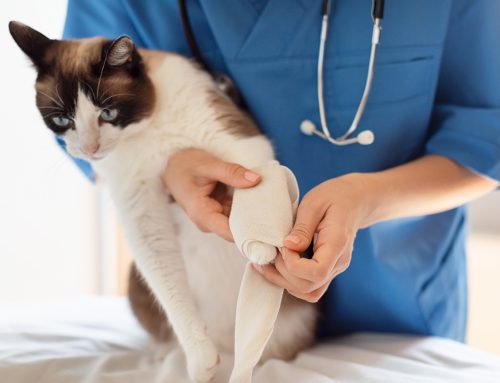Xylitol, which is also known as birch sugar, is a common sugar substitute found in sugarless gum, toothpaste, and some brands of peanut butter, among many other foods and products. While xylitol can provide benefits for humans, this natural sugar substitute has a toxic effect on dogs if ingested. So, Providence Vet is presenting everything you need to know to keep your dog safe from this potentially deadly ingredient. Learn which household products may contain xylitol, and how to recognize and respond to xylitol toxicity signs.
What is xylitol?
Xylitol is a sugar alcohol with a chemical structure that stimulates the taste receptors for sweetness on your tongue. Xylitol is found in many fruits and vegetables, but is mainly processed from corn fiber or birch trees. Xylitol looks and tastes like sugar, but contains 40% fewer calories and doesn’t raise blood sugar levels, so is a great sugar alternative with many health benefits for humans.
- Blood sugar and insulin levels — Diabetics sometimes use xylitol because their blood sugar levels stay at a more constant level with xylitol than with regular sugar, because the body absorbs xylitol more slowly.
- Dental health — Xylitol helps prevent tooth decay—human studies have shown that replacing sugar with xylitol can reduce cavities and tooth decay by up to 85%. Xylitol is an ingredient in many dental hygiene products, such as toothpaste and mouthwash.
- Ear health — A study performed in children with recurring ear infections demonstrated that daily use of xylitol-sweetened chewing gum reduced their infection rate by 40%.
What products contain xylitol that could harm dogs?
The most common products containing xylitol are gum and mints, but many other products that contain xylitol are available, including:
- Baked goods
- Cough syrup
- Chewable vitamins
- Mouthwash
- Toothpaste
- Deodorant
- Pudding or gelatin snacks
- Some peanut and nut butters
- Over-the-counter medicines
- Dietary supplements
- Sugar-free desserts
What is xylitol toxicity in dogs?
Dogs are highly sensitive to xylitol which, when ingested, triggers their pancreas to release a large amount of insulin, causing a severe drop in blood sugar level. In some dogs, acute (i.e., sudden) liver injury occurs after xylitol ingestion and, unfortunately, most dogs with advanced liver failure do not survive.
What are xylitol toxicity signs in dogs?
Xylitol poisoning signs in dogs include:
- Vomiting
- Decreased activity
- Weakness
- Lack of coordination
- Seizures
- Unresponsiveness
If you think your dog has eaten xylitol, immediately contact your veterinarian, or call the ASPCA Animal Poison Control Center for guidance. In some cases, hypoglycemia and other serious conditions may not occur for 12 to 24 hours, and your dog may need to be hospitalized for medical monitoring. Bring any product packaging, so you can provide specific item information.
Are cats vulnerable to xylitol toxicity?
According to the Merck Veterinary Manual, xylitol ingestion does not put cats at risk for extreme hypoglycemia or liver damage. Dogs are the only known domestic species with this sensitivity.
What is the treatment for xylitol toxicity in dogs?
Your veterinarian will diagnose xylitol poisoning based on your dog’s clinical signs and exposure history. If exposure is unknown, blood work and diagnostic imaging may be used to determine an underlying cause for your dog’s illness. In most cases, your dog will require hospitalization for blood glucose monitoring, dextrose administration, intravenous fluids, liver protectants, and monitoring. Blood glucose and liver function must be monitored frequently, to ensure they remain normal. Blood glucose also needs routine checking until the dog can maintain stable blood sugar levels without additional dextrose.
If liver function elevations or abnormalities are detected, liver protective medications can minimize further damage. Because the liver can regenerate to some extent, dogs with mild liver changes can recover with supportive care. However, liver injury may be permanent, and xylitol-induced liver damage or failure is often fatal.
How can xylitol toxicity be prevented in dogs?

If you use any products that contain xylitol, ensure they are stored safely out of your dog’s reach. Other simple ways to reduce the threat of xylitol poisoning include:
- Removing xylitol-containing products from your home
- Substituting non-xylitol products when possible
- Using only pet-specific toothpaste when brushing your dog’s teeth
- Emptying pockets of gum, candy, or mints before discarding clothes or jackets
Xylitol toxicity can have serious consequences for your pet, but your awareness and some simple precautions can keep your pet safe and healthy. If you suspect your pet has ingested xylitol, or have more questions about their condition, contact Providence Vet. For after-hours care, call the nearest veterinary emergency hospital or the ASPCA Animal Poison Control Center.






Leave A Comment